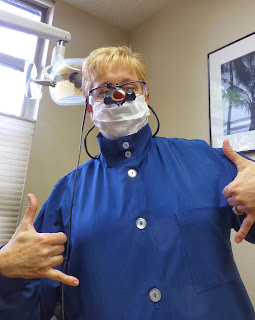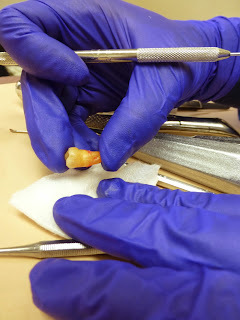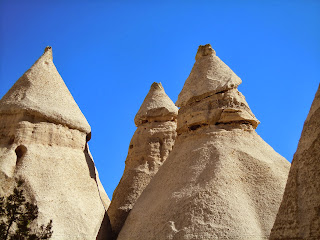My dentist talked me out of my last wisdom tooth the other day, and I mourned aloud that this would cause the rest of my teeth to stampede for the exit. That’s what I concluded was the reason they were all crowded up at the front of my mouth even though they ostensibly had more room without the wisdom teeth: they’re trying to get away from the carnage. They’re already almost out the door and the only reason I still have them is they tripped all over each other in their panic. She wasn’t impressed with my analysis. “Oh, no,” she explained. “You’ve just got ‘mesial drift.’ It’s very common in older people. Your teeth naturally drift toward the front of your mouth.”
Mesial drift. It’s all clear now. I’m just entering another epoch in Planet Murr. Planet Murr has been on the move since its inception. Oh sure, it’s hard to imagine any movement at all, especially when Planet Murr is watching TV, and harder yet to imagine that at any point its fingers could touch its toes, but in fact it started out with all the major visible portions bunched up together. And slowly, almost imperceptibly, they all began to drift apart. In the early Murrassic period, changes were relatively rapid. There was notable volcanic activity during which a pair of cones were built up out of virtually nothing. This epoch, the Holobscene, coincided with an age of thrusting and upheaval;
uplift was the order of the day. Volcanic activity also led to swarms of smaller extrusions for a time, particularly in the nose and chin regions; remarkably, there has been no observation of dikes entering along cracks, except that one time. And then followed a relatively quiet period of sedimentation.
The mechanism for the drifting tendency of Planet Murr’s crust had been a mystery until the discovery of the central rift in its bottom from which new material is more or less constantly being pumped out. Seafloor spreading has been noted in the same vicinity. Most of the more catastrophic shifting movements, such as the most recent detachment of the underarm skin from the underlying muscular structure, had seemed random and unpredictable until the full extent of Planet Murr’s many faults were detected, pointed out, discussed in the social media, and mapped.
Throughout this modern era, the volcanoes have eroded gradually, culminating in a major landslide during a time when Planet Murr’s molten core reasserted
itself. Since then a quiet period has reemerged, replacing all the other periods. At present most of the visible changes have been brought about by the folding of previously laid strata and weathering, although pressures from the gaseous core continue to be exerted upon the material. Clues to the metamorphic nature of the current crust material include its general nubbly texture and the observation that most of the components of the outer layers of Planet Murr are lined up and pointing in the same direction (down).
Ain’t that the schist.



Nice to have a dentist that talks you out of your teeth! Ours gets in there with pliers and crowbars. Messy, messy!
Give me the talking cure, any time.
Unfortunately my teeth can't understand her with that mask on, so the pliers had to come out.
BTW, the geology lesson. Wonderful! Gives me something to think about.
It's been a hell of an era.
Ain't nobody ever taking my wisdom teeth. I have hardly any wisdom left, and if that's where I keep it, I'm hanging on to 'em. ("Murassic period" — gigglesnort!)
One of us should go look that up–why they're called wisdom teeth. There's got to be a story there. At least I still have my funnybone.
The only reason I'm commenting at all is to let you know I read about Planet Murr and am in awe. 🙂
You should see my moon!
You are brilliant! That is all. *shuffles away, still giggling*
Come back!
Always. Where else can I read about beaver butts and poop posts?
You must have a camera implanted in your head. Writing and photography are the last things that enter my mind when I go to the dentist's office.
I nearly always get something interesting out of a doctor visit. Which is good, because the magazines are usually way out of date.
My teeth are continually fighting for "lebensraum", I believe one of them called it.
I have a most unique bite pattern.
And a bit of my own seafloor spreading.
You have my condolences over the loss of your tooth.
Pearl
You know, Pearl, I have no difficulty at all believing that your teeth converse with each other in German. Planet Pearl is a special place.
Sheesh, I was so engrossed in reading the geology of Planet Murr that the dentist-office photos didn't even register until I read that comment. You are one clever writer, despite your mesial drift. And now I have a lovely term to describe my own teeth, which drifted that way even after I paid a whole lot of money for braces when I was about 50. Hope your mouth doesn't hurt too badly, or that they gave you good drugs.
Ever since I first wrote about my teeth a few months ago, I've been super-sensitive to how they're poking into my lips and stuff. I don't know if they suddenly got a lot driftier or if I just noticed it all. I'm kind of glad to learn that they keep misbehaving even after a late-life bracing, because now I can cross that off my list.
It's very comforting to know that these things are happening to someone else besides me. Did you realize you are performing a public service? Comfort with a side of funny.
Oh we're all in a permanent slide. If I live long enough I fully expect to be mostly puddled around my ankles.
Mesial drift! Even my dentist wouldn't tell me why I feel like a skeleton face when I smile.
They're heading for the door, they are.
What a nice dentist to allow you to take photos. And that's quite a large specimen of tooth. If you bury it and it is found 100 years from now, they will think we were a generation of "molar monumentous". Good luck eating corn on the cob once your front teeth disappear into the back.
I've had good luck with asking doctors for photos. My last two gynecologists have been particularly forthcoming. The only time I got a refusal was from the mammogram technician. And I asked her to take MY picture. Frankly, I wanted to see what that looked like from a distance.
Oooh. At last an explanation for the geographical shifts in my body which I can understand, and enjoy.
Now, can I remember it…
Megathanks. Again.
I didn't even get into the deep-sea trenches.
Ah, but you can probably whistle. I now have to train the cats to answer to a verbal "come here" since I had a new plate made. I bet a lot of dentists have shares in softball manufacturing.
Well. I can "put your lips together and blow" whistle. I only wish I could tooths whistle.
"(E)xcept for that one time.."
Heh.
heh.
This all reminds me of that movie, Yourassic Park. And good job on the geology lesson.
No, YOURassic Park!
I love how your mind works!
I had my own mesial drift after my third molars were removed, not all at once, and each wisdom tooth drifted forward to fill the space. Since then two of them have had to be removed, one just recently and a third has crumbled to the gumline. For years I thought I had no wisdom teeth, hence my lack of total wisdom, but a dentist informed me otherwise a few years ago.
Informed you you had teeth, or wisdom? I know my childhood dentist knew I had wisdom, because he kept drilling for it.
Teeth of course. The wisdom is still in question.
I am told that dentist have to make a living too: I just wonder why every time I go in she expects me to pay for her next cruise.
And dental insurance! Costs as much as all the other medical insurance, and doesn't pay for anything. Oh well. I like my dentist and hope she goes on plenty of cruises.
Brava! As someone who just concluded a two year, $6K adventure in orthodontureland followed by 4K's worth of dental (and at the age of 69, mind you), I salute your commitment to the future. Brava, indeed! If you want me, you'll probably find me under an overpass somewhere in the Portland area. I'll be the one with the great teeth.
That will definitely make you stand out in overpass-world.
You sound just like Iceland! Only warmer and squishier and nothing spews up.
Not on a good day, anyway.
Well, that answers a lot of questions.
Not that anyone was asking.
My teeth are drifting too but they haven't located the door, so some of them are turning and looking over what would be their shoulders, if they had 'em. Probably wondering why I never grew wisdom teeth and looking back in wonder. I do plan to start thinking of myself as a planet, however, or possibly even a sun! Explaining certain eruptions away as solar flares has a charm about it. Not touching black holes with a barge pole, however.
Word. Have fun with the flares. The next epoch is killer.
I love it! Planet Murr has such a rich history, and the current epoch is the best one yet.
Oh you didn't know it when it was all bunched up tight. But thanks. It's the drift inside the skull end that worries me now.